Provocative Massillon Museum art exhibit confronts Native American land removal
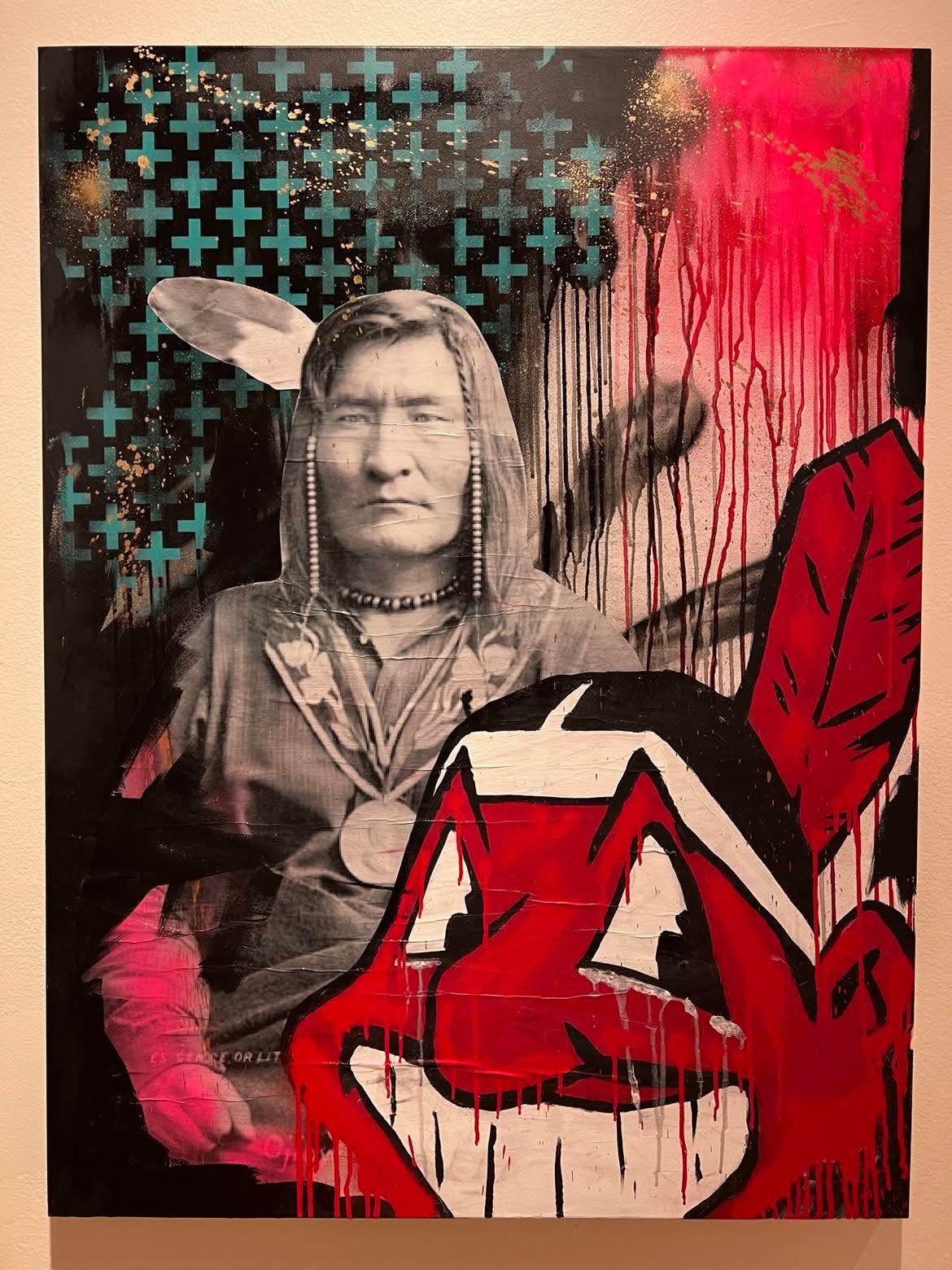
MASSILLON – Entering the main gallery of the Massillon Museum, visitors likely will be struck by a large, vivid image of Chief Wahoo that is clearly visible from across the room.
The rendering of an authentic Native American is juxtaposed with the former logo of the Cleveland Indians professional baseball team (renamed the Cleveland Guardians last year).
Long an image debated by baseball fans and protested by Native American groups, its artistic representation provocatively helps tell the story of the plight of Native peoples as part of a new exhibit, "Un-settling: A Story of Land Removal and Resistance."
The exhibit opened earlier this spring and continues through May 22 at the museum in downtown Massillon.
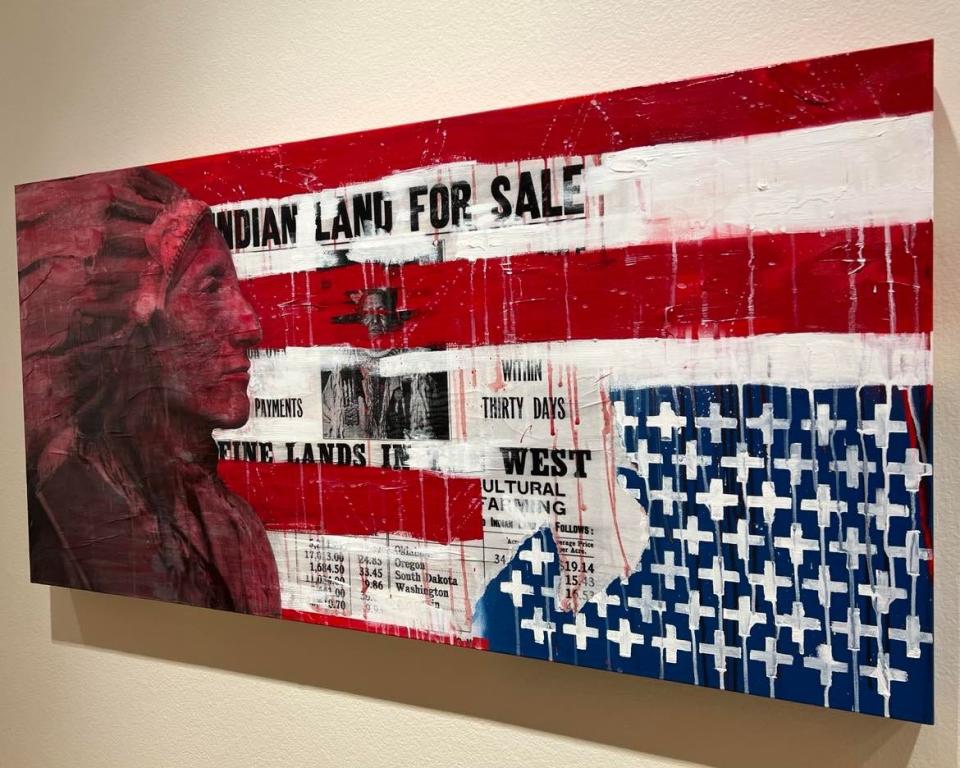
The Chief Wahoo depiction is only one work among roughly 40 – paintings, ceramics, photographs, textile and mixed-media pieces created by Native American artists of varying generations.
The untitled piece made with acrylic, ink and paper on canvas was created by Gregg Deal, an activist in Colorado whose work "confronts uncomfortable stereotypes and histories," the exhibit explains.
Deal's artwork specifically "addresses the impact of Euro-American settlers who arrived to North America and sparked a traumatic period of war and disease, later forcing Native peoples onto government-controlled reservations," the exhibit says.
"Un-settling" describes the former baseball team logo as a "racist caricature of a Native American man with bright red skin, a cartoonish smile and a feather in his hair — a dehumanizing portrait of Native people as savage warriors of an ancient past."
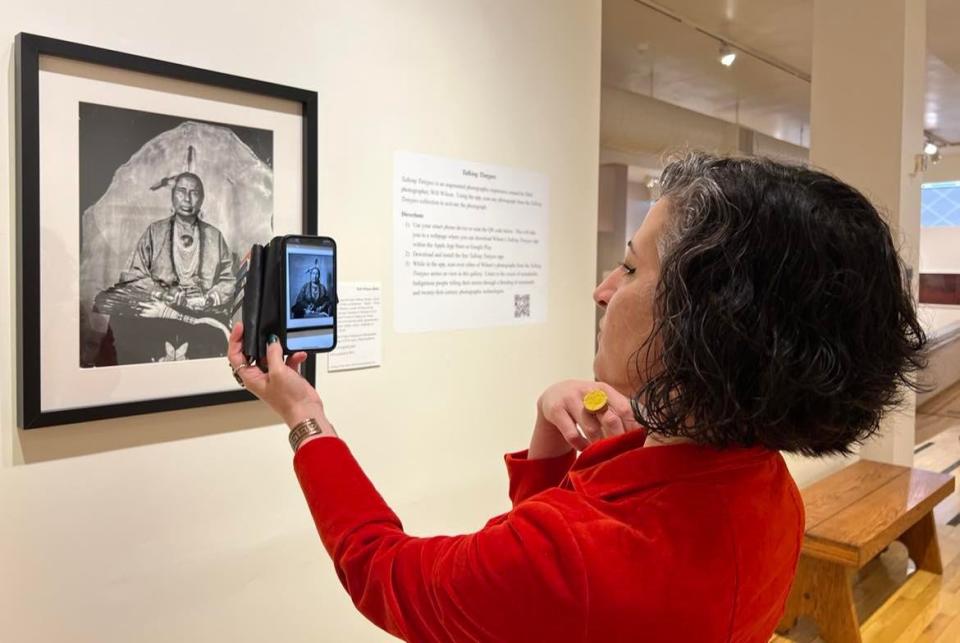
Other images are more subtle or traditional. A few are similarly evocative. Portraits of modern Native Americans are also displayed.
Alexandra Nicholis Coon and Stephanie Toole, both of the Massillon Museum, said the exhibit is intended to educate and illuminate viewers on the subject of Native Americans through artwork.
"Some of the artwork is more subtle and abstract and has a gentler approach," said Coon, the museum's executive director. But "when you start to understand what it's about, it's still very provocative and intense."
Coon said Deal takes a "very punk rock" approach to his art and "defiantly puts it all out there."
Artists and photographers also include Dakota Mace, Hulleah J. Tsinhnahjinnie, Jesse Cooday, Melanie Yazzie, Natani Notah, Norman Akers and Will Wilson.
Toole noted they are all affiliated with Native American tribes.
Powerful exhibit
"Un-settling" reflects on when and how Native Americans fought oppression following a period of genocide that wiped out many Native communities.
In the 20th century, a shift in attitude celebrated Native American cultures as a uniquely American heritage, the exhibit explains.
Toole said the exhibit is multi-faceted in how it addresses that culture through storytelling and artwork while confronting the atrocities of centuries past.
"That's why this exhibit is so powerful," she said. "Because it focuses on that upheaval, that forceful uprooting of people and trying to strip the cultures unique to them.
"These artists are reclaiming through their art ... that identity," said Toole, the museum's education and outreach manager.
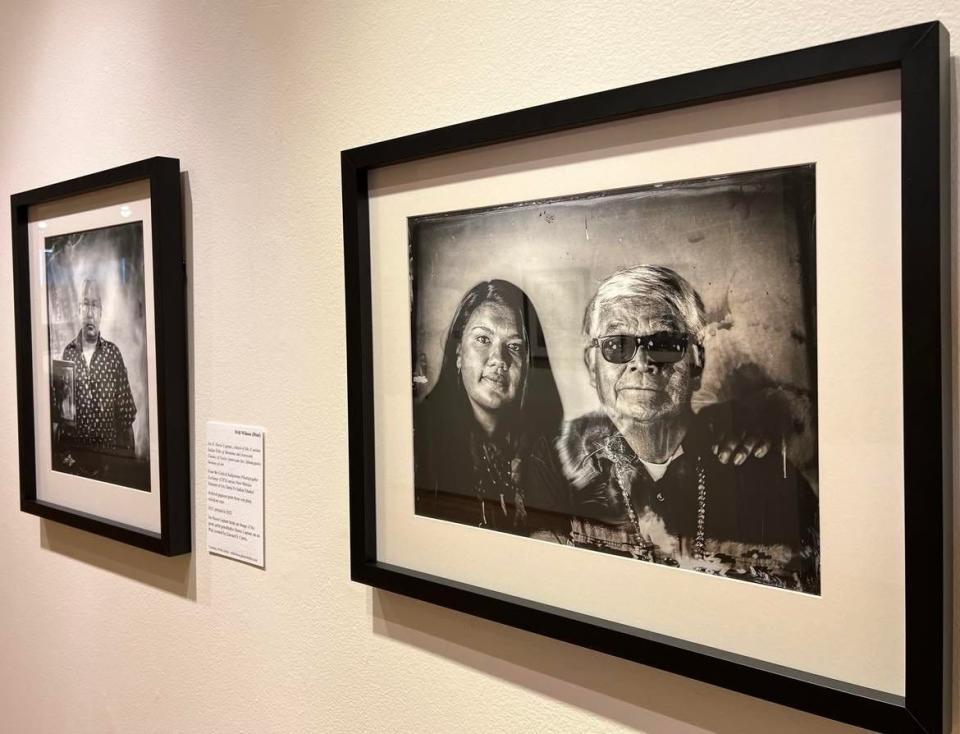
'An American Sunrise'
Related museum programming includes Thursday's 5:30 p.m. discussion with Sundance, executive director of the Cleveland American Indian Movement, which for decades worked to change the Cleveland baseball team's name and eliminate the Chief Wahoo logo.
The event will be moderated by Shana Klein of Kent State University.
A keynote presentation is scheduled for 7 p.m. on May 5 with Joy Harjo, author of the poetry book, "An American Sunrise," which is also part of the museum's "NEA Big Read," an annual event and partnership with the Massillon Public Library.
Both events will be at the museum at 121 Lincoln Way E.
"The exhibition is a visual accompaniment to the memories of yesterday and stories of today that parallel the words of Native American Joy Harjo, U.S. poet laureate, in her award-winning book, 'An American Sunrise,'" the museum said in a news release.
A recent panel discussion about the "Un-settling" exhibit, featuring Massillon Museum staff, exhibit curators and Native American artists, can be replayed at https://www.facebook.com/watch/live/?ref=watch_permalink&v=2828211584138557
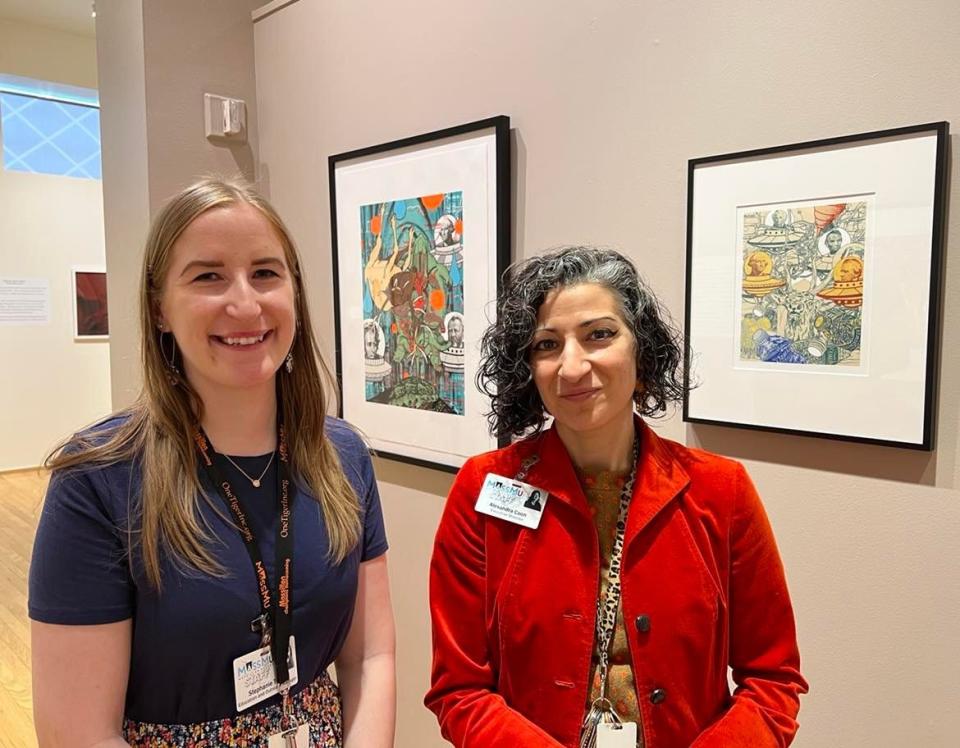
Curating the exhibit
Klein and Marissa Tiroly co-curated the exhibit.
Klein, an art history professor at Kent State University who completed her doctoral training at the University of New Mexico, said curating the Massillon exhibit posed challenges.
"As a new resident of Ohio," she said, "I struggled to find colleagues who are Native and/or teach Native subject matter here in the Northeast."
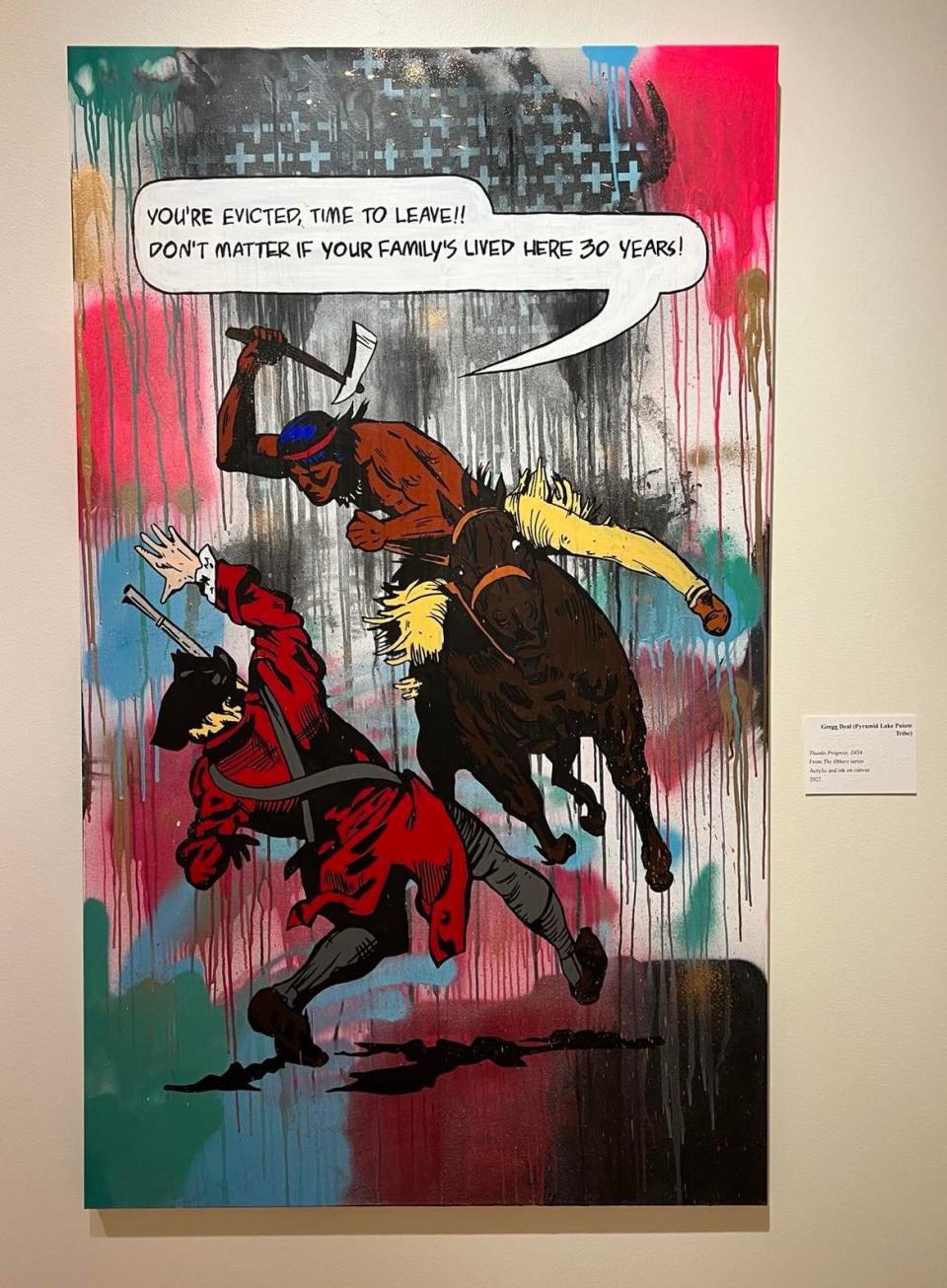
Klein said it was important to incorporate Native artists into the "Un-Settling" exhibit, "so that we can show (their work) on their own terms, something that historically has not been done in this country where non-Native curators have exploited, mistreated or diminished the importance of and meanings behind Native American art.
"It is a fine balance to strike between amplifying Native voices in this show while also not constantly burdening Native people to have to explain their history and perspective," the professor wrote in an email response.
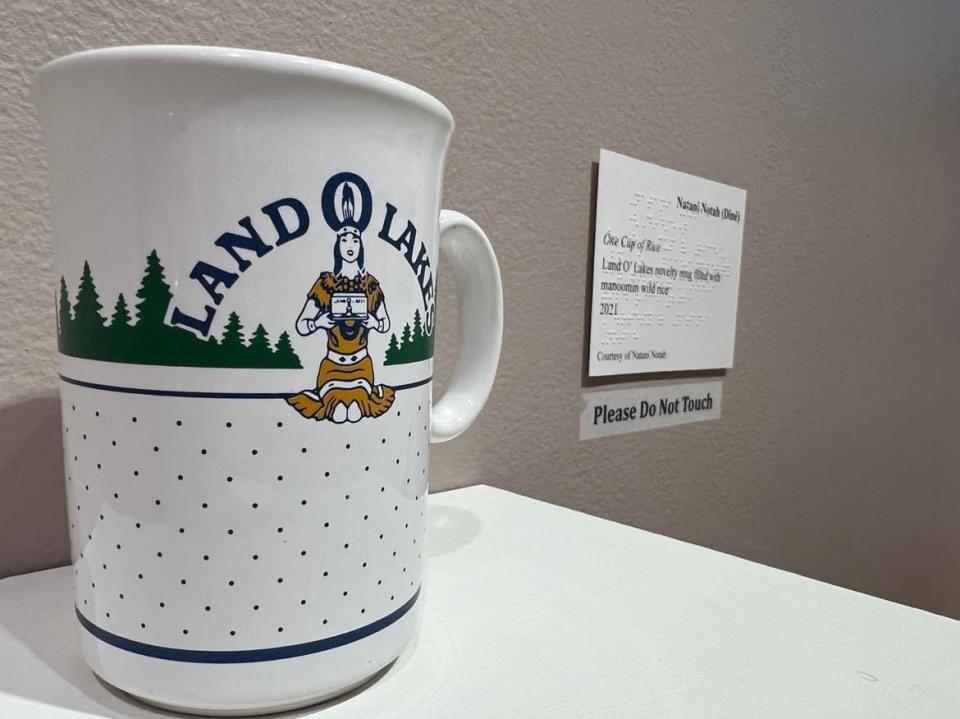
Working on the exhibit has been a learning experience, Klein noted.
"A small but mighty network of Native American scholars in this area ... have made me aware how there are no federally recognized tribes here precisely because of the legacy of Indigenous removal in this area and the systematic genocide and treaties that were conducted to remove Native peoples from this region," she wrote. "This is why an exhibition on Indigenous removal and resistance is so important in Northeast Ohio."
Harjo’s book, "American Sunrise" inspired the exhibit's theme, Klein said.
"Harjo talks about the heartbreaking and inspiring story of Native peoples in this country, which I think a lot of Americans can relate to – whether Black, Jewish, immigrant or otherwise," she said.
Native peoples "continue to use art today to fight racism, stereotypes and uneven power dynamics," she added.
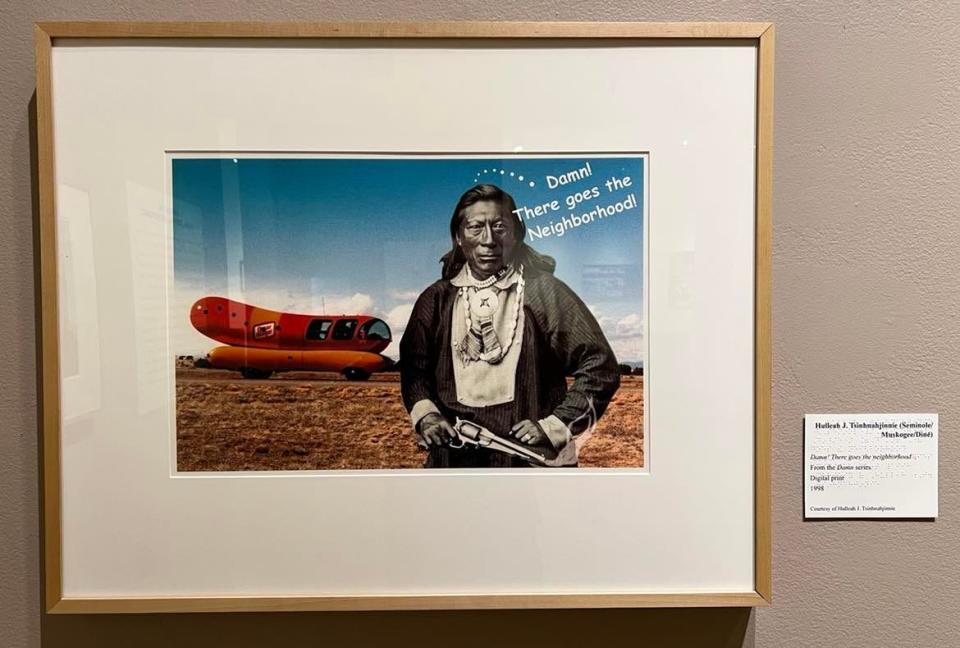
Historical context with art
Tiroly received her masters in art history at Kent State University and formerly helped manage the School of Art Collection and Galleries. She also has curated several other smaller exhibits in Northeast Ohio.
"While I did not intend for 'Un-settling' to elicit a particular response, my hope is that the exhibition will be one that stays with visitors and engenders new perspectives and dialogue," she wrote in an email. "I think part of the brilliance of the artists’ work and Harjo’s poetry is the humanness they bring to topics of removal and colonization – topics some may avoid when the focus is politics rather than people."
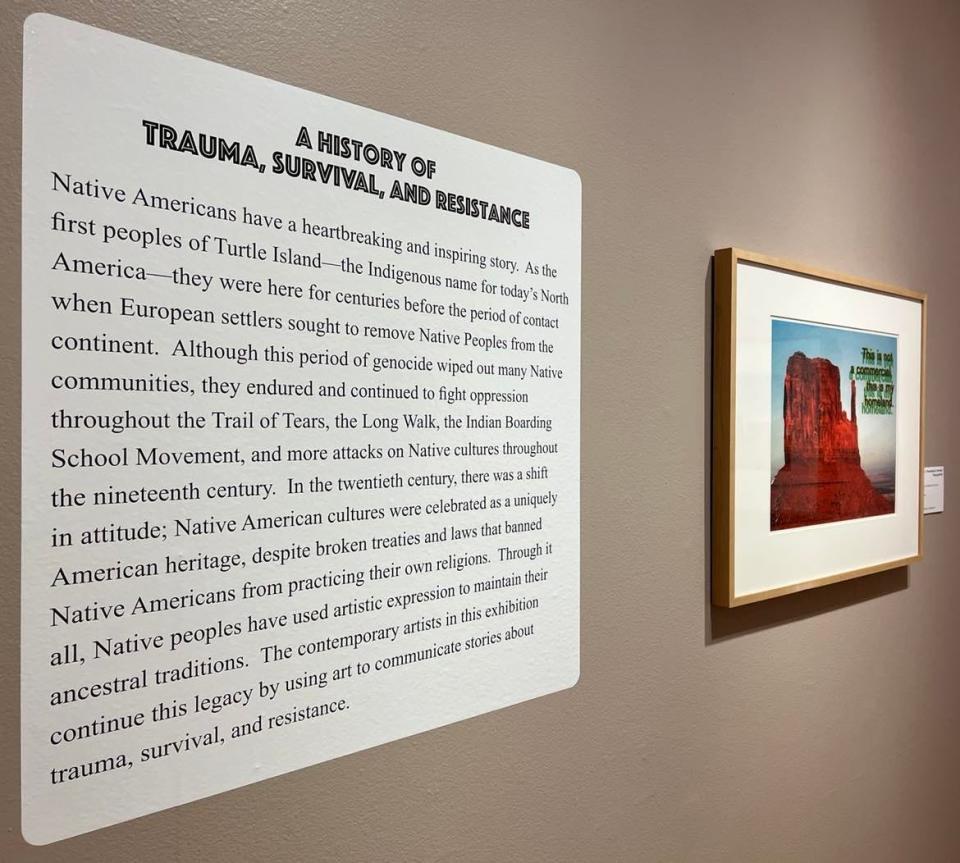
Tiroly said it was important to include historical context alongside the artwork through gallery panels, artist audio statements and interactive videos.
"We felt the artists’ messages were too significant to risk remaining hidden in layers and symbols," she said.
Having difficult conversations
A companion library features books and articles that provide further context and expound on the exhibit's themes, the museum said.
"If you really want to deep dive and get into more intense conversations, you can do that there," Coon said. "We make it comfortable to approach the uncomfortable. You don't have to come in here and feel like you're going to be attacked or feel inadequate for having limited knowledge or feeling a certain way."
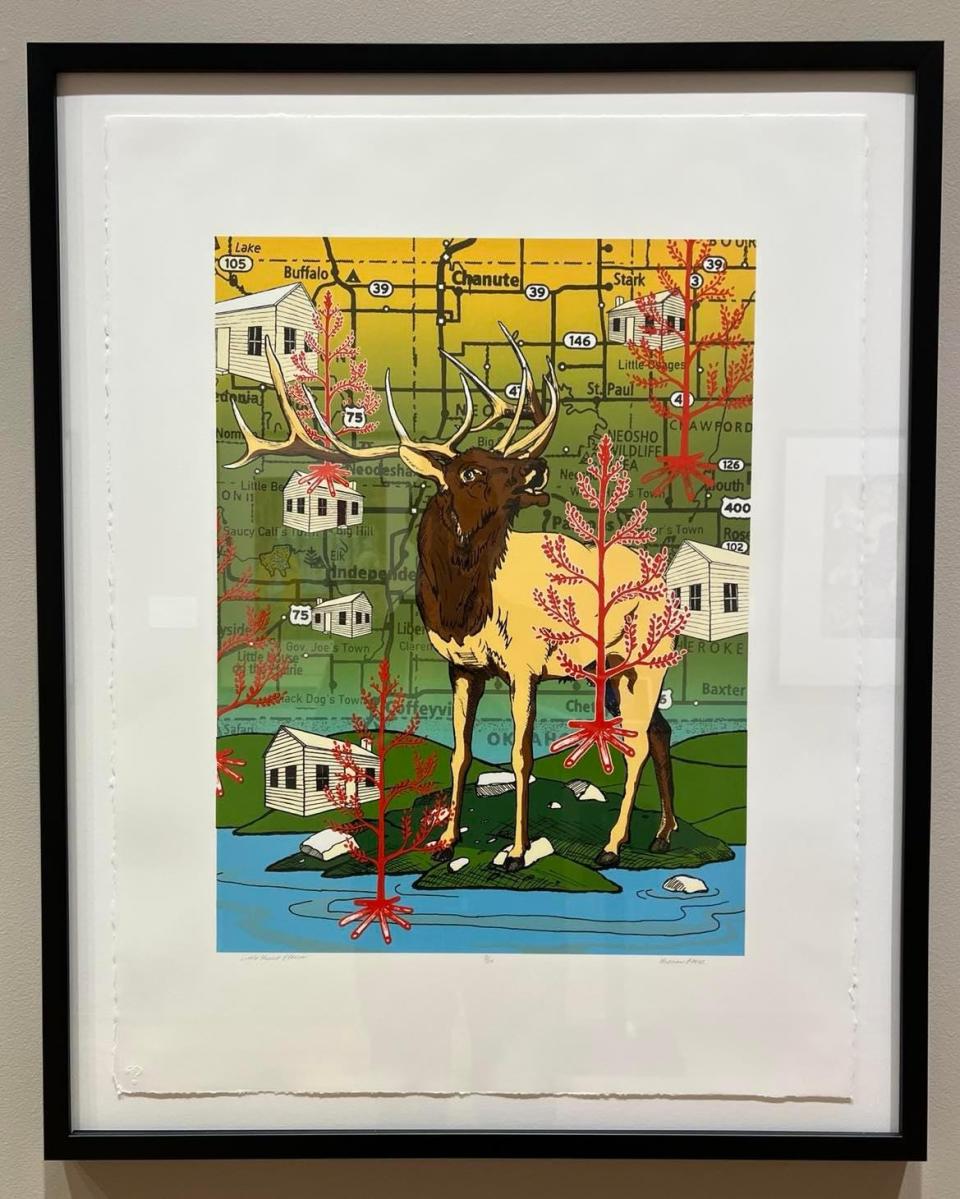
Tiroly also credited the Massillon Museum's willingness to host discussions around topics that may be emotional or contentious.
Coon said the museum creates platforms "to have these ... difficult conversations" because "we understand people will come to the exhibit with different levels of knowledge and opinions on this subject.
"We create a venue where you can ask questions."
Reach Ed at ebalint@gannett.com. On Twitter: @ebalintREP.
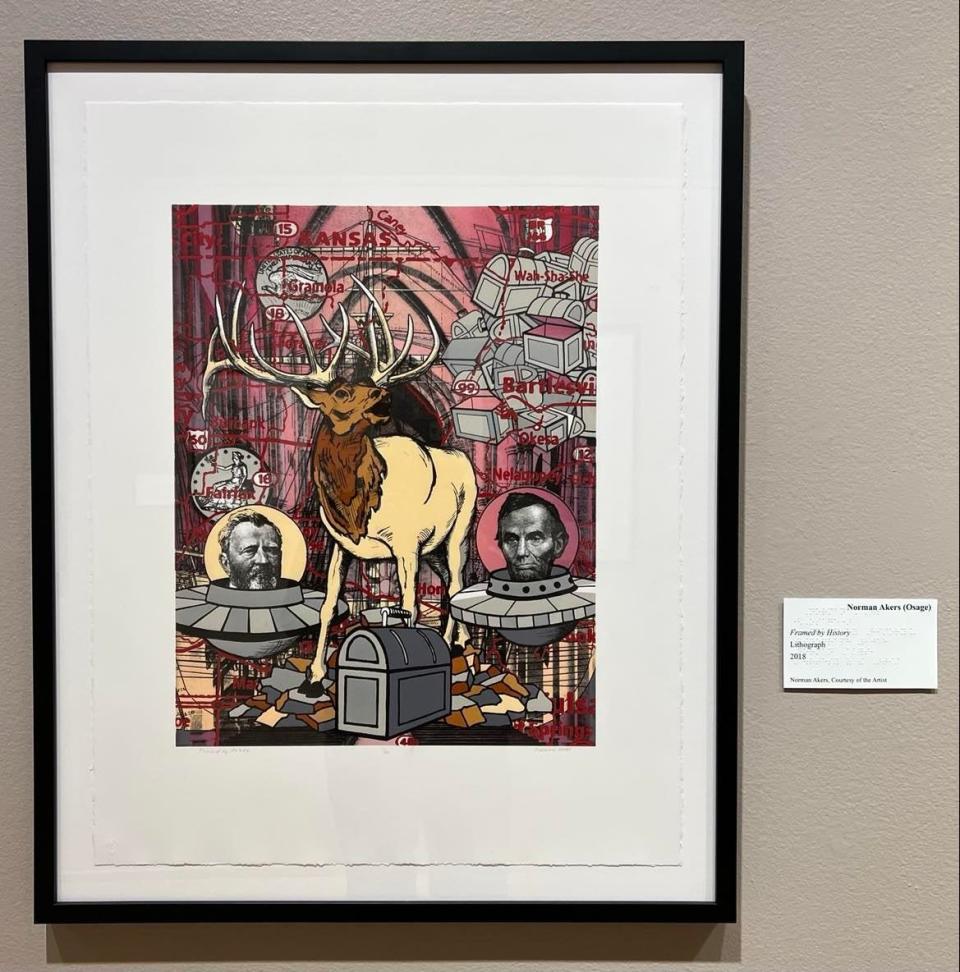
This article originally appeared on The Repository: Native American art exhibit in Massillon is both provocative, subtle

